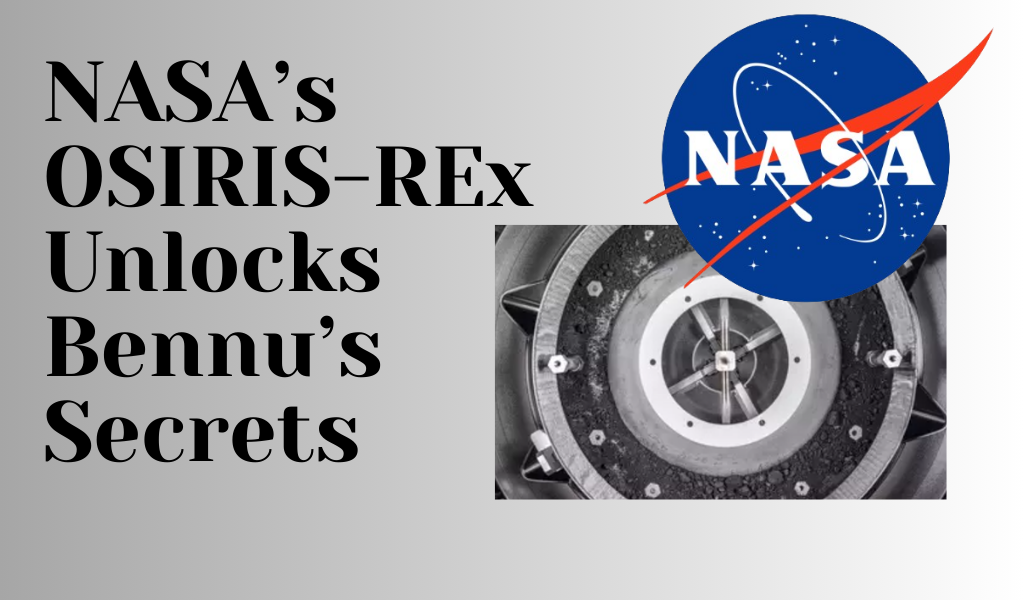NASA's OSIRIS-REx Mission Overcomes Challenges to Access Precious Asteroid
NASA’s OSIRIS-REx spacecraft encountered an enormous task in a tale evocative of common hardships: opening the lid of its asteroid sample container following a billion-mile voyage into deep space and back. NASA’s epic three-month battle with the container lid mirrored the frustrations of many and garnered attention from both space aficionados and pickle jar skeptics.
The moment of triumph came last week when NASA managed to open the sample container on the asteroid Bennu and expose an amazing variety of rocks and dust that the probe OSIRIS-REx had photographed. This discovery represented a critical turning point in the space agency’s mission by providing never-before-seen access to the vast cache of asteroid material gathered during the historic voyage.

The center of the conflict was the TAGSAM (Touch-and-Go-Sample Acquisition Mechanism), which was kept in a separate glove container to avoid contamination. The group had to create new tools to deal with the hard-to-remove fasteners that wouldn’t go away when they were tapped on the kitchen counter since only certain equipment could be used.
Months of waiting paid off on January 10 when NASA technicians removed the last two fasteners, opening the canister and allowing access to the remaining asteroid material. This material, which includes dust and boulders as large as 0.4 inches, will be carefully examined, and in the upcoming weeks, the sample’s final mass will be ascertained.
A nerve-wracking moment for the OSIRIS-REx mission, which made history in September 2023 by being the first American mission to return an asteroid sample to Earth, occurred when two stuck fasteners prohibited rapid access to much of the material that had been recovered. Even though the sampler head’s exterior had already yielded 70.3 grams of material, the majority of the sample was still tantalizingly trapped inside the capsule.
Now that the fasteners have been taken out, NASA’s Johnson Space Center in Houston will dismantle the TAGSAM head in order to retrieve the leftover asteroid material. This accomplishment paves the way for additional scientific investigation, since later this year NASA intends to make available a catalog of all the samples taken from Bennu. By allowing experts all across the world to make requests for study or exhibition, this catalog will open up new possibilities for deciphering the secrets of the cosmos.
The asteroid Bennu, which is thought to be a primitive space rock from the early solar system, could reveal important information on the creation and development of celestial entities. A significant scientific advance was made when the canister was successfully unlocked, enabling scientists to examine the cosmic history preserved in the old rocks and dust.
The spacecraft OSIRIS-REx has changed significantly and is now called OSIRIS-APEX. It will travel to the asteroid Apophis, which is named after the chaotic deity of ancient Egypt, for five years to examine it.
The canister containing priceless Bennu dust samples was unlocked, demonstrating the commitment of NASA’s engineers and scientists. The perseverance of the Johnson Space Center crew is demonstrated by the painstaking measures taken to preserve perfect samples and the successful disassembly of the TAGSAM head. Their steadfast dedication has opened the door for an international scientific expedition, providing scholars and organizations with the chance to discover the cosmic mysteries ensconced in the ancient asteroid fragments. The unsealed canister, which now holds almost 70 grams of material, is like a heavenly Rosetta Stone waiting to reveal more about the solar system and the beginnings of life on Earth.




